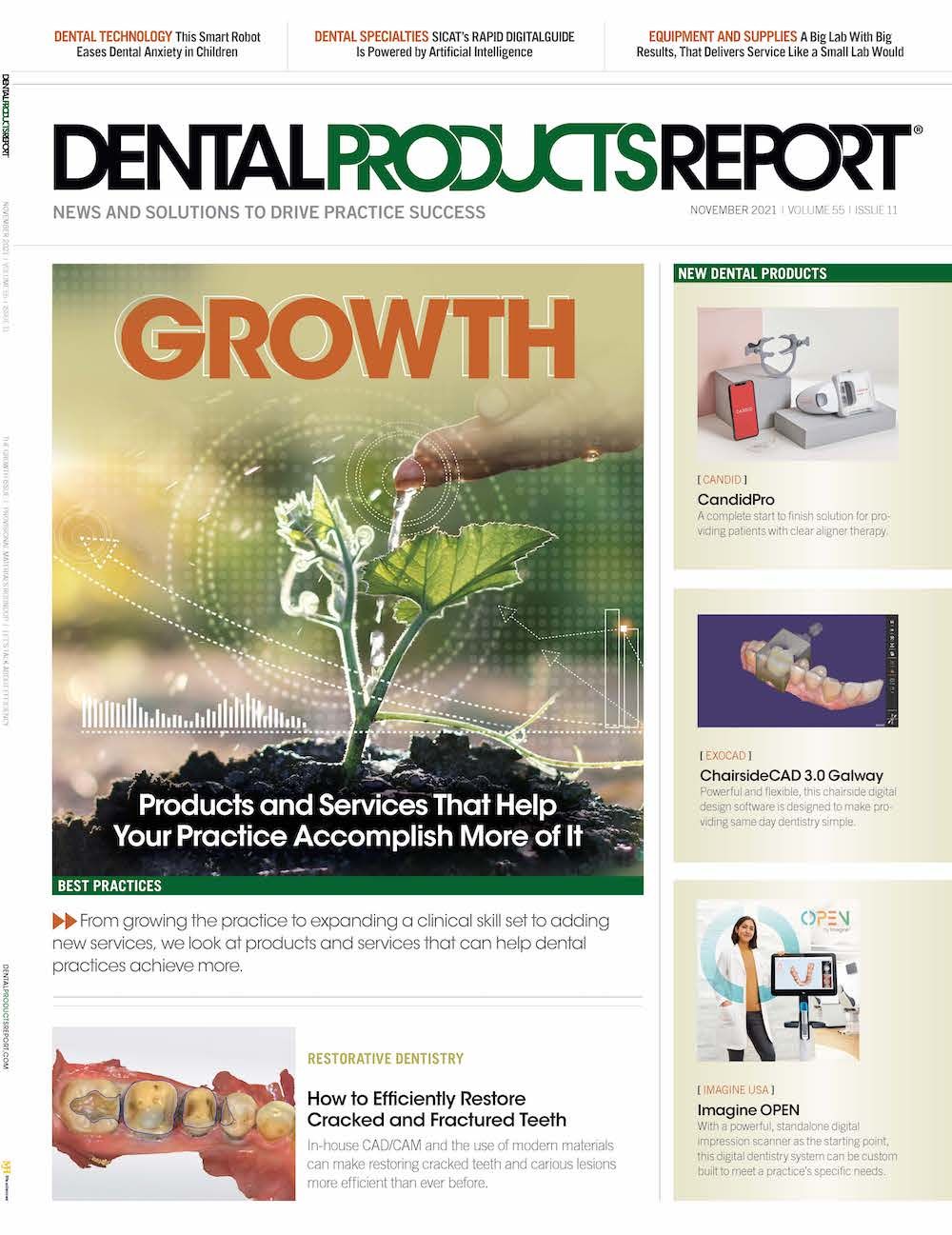5 Types of Uncommon Dental Growths
A look at some uncommon ways growths can develop in a patient's mouth.

This issue’s cover story looks at the subject of growth as it applies to practicing dentistry and being a dental professional, but the term can also be applied in several clinical ways. Not every growth is a good thing, just as not every unusual growth is a bad thing. Encountering any of these situations may be extremely rare, but it’s never a bad idea to know about some of these unique and unusual dental situations.
Hyperdontia
This condition is when extra or supernumerary teeth grow in a person’s mouth. Although this is most common among children with extra primary teeth, hyperdontia can occur with adult teeth as well. The condition is diagnosed via visual examination if the supernumerary teeth have erupted, or via radiograph if they remain below the gingiva. Treatment involves extracting the extraneous dentition. This condition occurs in just 1% to 4% of the population.
Tooth Gemination
This condition occurs when 2 teeth grow from the same root. In these cases, each tooth has its own crown and pulp chamber, but they both originate from a single root. Geminated teeth are diagnosed via radiography or visual examination. Although these teeth can sometimes remain untreated, a geminated tooth can cause alignment problems with adjacent teeth and sometimes requires extraction or restorative treatment. This condition occurs in less than 0.5% of teeth, so it is rarely seen.
Gingival Fibromatosis
This condition occurs when gingival tissue growth occurs beyond normal and can cover more of a patient’s teeth or prevent tooth eruption. Although rare, it is most commonly linked to hereditary factors and is diagnosed based on visual examination. Treatment of this condition involves surgical removal of extra gingival tissue using either a scalpel or a laser.
Odontoma
These benign tumors are comprised of dental tissue that grows irregularly, often without erupting. Although they are generally benign and eventually stop growing, odontomas can cause more serious health issues on occasion. These growths are most commonly identified via radiography, and surgical removal is the usual course of treatment.
Mandibular Tori
As the name would suggest, these growths occur on the mandible, and in this case, they are bony growths on the inner side of the mandible that occur in approximately 6% of the population. These growths can go unnoticed by patients and at times do not interfere with dentition, mastication, or speech. Diagnosis can be done via visual examination or radiography, and treatment via surgical removal is only necessary when the growth is causing the patient pain or discomfort.
